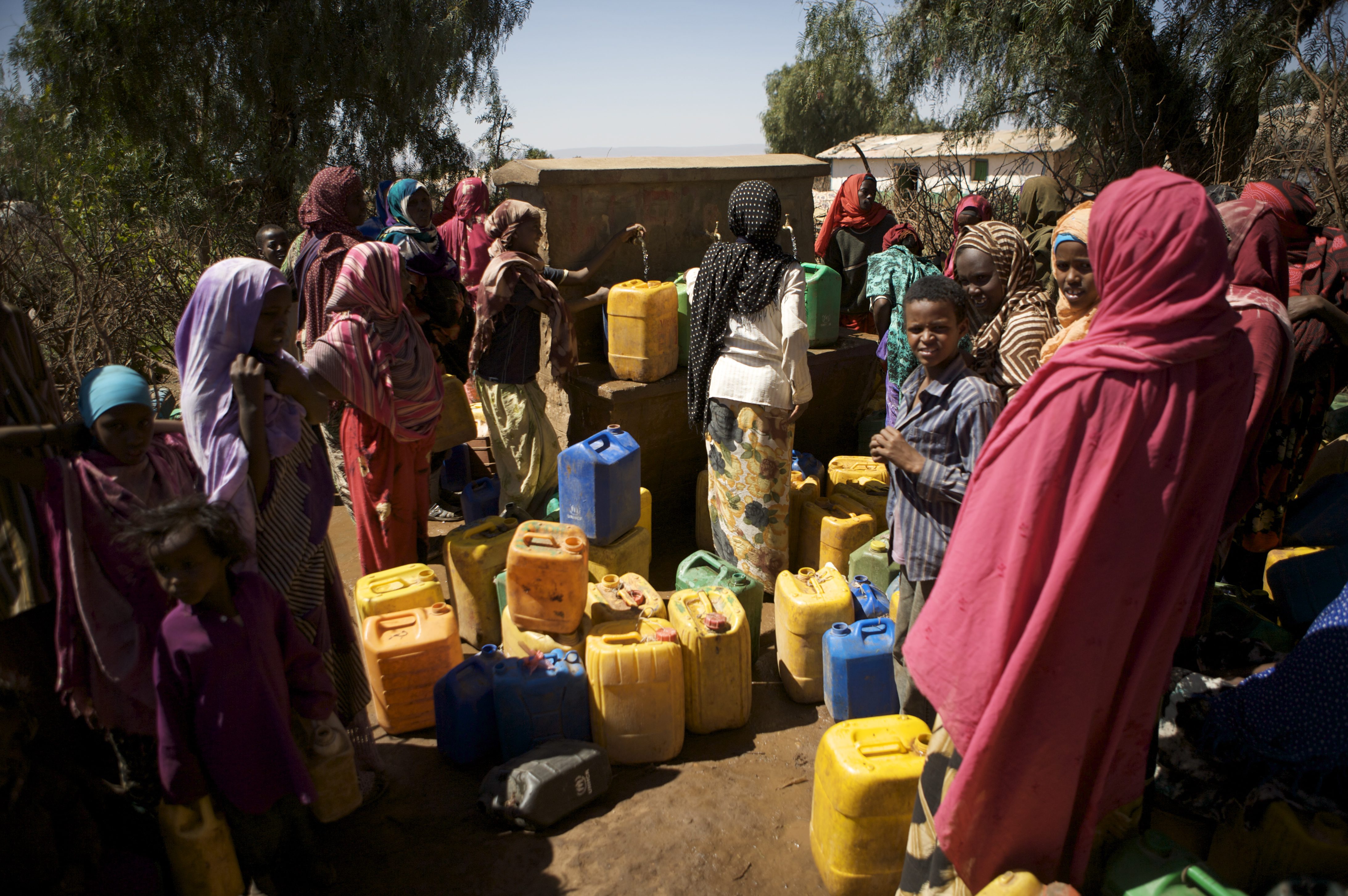UNHCR completes major water project for Somali refugees in Ethiopia
UNHCR completes major water project for Somali refugees in Ethiopia

JARRAR VALLEY, Ethiopia, May 4 (UNHCR) - UNHCR has completed and inaugurated a multi-million dollar water and electrification project that will benefit tens of thousands of people, including Somali refugees and members of the local community, in a semi-arid region of eastern Ethiopia.
The US$5 million Jarrar Valley Water Supply scheme in the country's Somali region is using electricity to pump 1.3 million litres of fresh water a day to 51,000 people, including 16,000 refugees. The project was formally inaugurated late last month by Deputy High Commissioner for Refugees T. Alexander Aleinikoff and plans are afoot to supply 100,000 people with water during the dry season.
"This is an innovative project and a good model," said Aleinikoff, who was in Africa on his first trip as deputy high commissioner. "It provides an important source of water to the refugees and also benefits the local community, but is also good for the environment and saves money."
The project was welcomed by those who will benefit from it. "After years of huge difficulties, we now have plenty of clean drinking water and enough for cooking and washing," said Rodo, a mother of four who has spent the past two decades in Kebribeyah camp after fleeing conflict in her native Somalia. "Thanks to the much improved water yield, we are much cleaner and healthier than before."

In the past, tanker trucks were used to bring water to Kebribeyah, but this was expensive and logistically cumbersome. So UNHCR and the regional authorities drilled wells in 2004 in the Jarrar Valley, 21 kilometres away, and piped the water to the camp using diesel-powered pumps.
In a bid to further cut costs, UNHCR has funded the extension of the electricity grid to the Jarrar Valley. The work was completed last year and 15 generators now pump water from seven wells to Kebribeyah, guaranteeing a regular supply to the refugees and to members of the local community who live along the route of the water and new power lines.
"We are now able to fully meet the needs of the refugees and, of course, it was logical to extend the service to the local people," said Anthony Mulenga, the UNHCR water engineer in charge of the Jarrar Valley scheme. "It is also cost-effective. By switching from diesel to electric, we have slashed our costs from US$7,000 to US$2,700 a month," he added.
Kebribeyah now has 28 water outlets, up from four just five years ago, while the daily water output has increased from 12 litres to 20 litres for each of the 16,000 refugees now living in the camp. This meets internationally accepted standards. The easy availability of water in the semi-arid region also means that women no longer have to risk their safety by walking long-distances to fetch water.
The project is helping to ease tension between locals and refugees because it also benefits the local community. Both the power grid and the water pipeline are connected to villages and points along the route, improving life for Ethiopians and boosting the local economy.
"Before UNHCR gave us these precious water points, which pour clean and safe water, we faced serious shortages of water," said Fadumo Bashir, a local resident, adding that they used to collect their water from dirty ponds, "which led to serious health problems."
Meanwhile, UNHCR is also improving water supplies to the nearby Sheder camp, home to 8,000 refugees, which was established in mid-2008 to accommodate a new influx of refugees from Somalia and has three wells. In Aw Barre camp, also home to 8,000 refugees, work has begun to extend supplies from two boreholes to the 20,000 local residents.
Ethiopia currently hosts some 149,000 refugees, including 60,000 Somalis sheltered in five camps in the east. Some 16,600 are long-standing refugees who fled Somalia in the 1990s while the rest arrived after 2006.
By Yusuf Hassan and Kisut Gebre Egziabher in Jarrar Valley, Ethiopia








